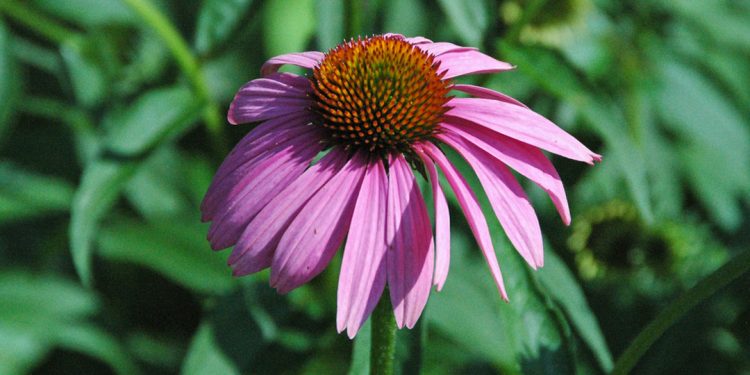A tall, hardy perennial, 1.2 m (4 ft.) high, with a rhizomatous rootstock and ovate-lance late leaves. The purplish-pink daisy-like flowers have raised conical centers, made up of prickly brown scales, reminiscent of hedgehogs (Echinacea is from the Greek word for hedge-hog). There are also white-flowered cultivars.
History and traditions
Coneflowers were used by Native Americans as wound-herbs, to treat snakebite and as a general cure-all. The early settlers took to them as home remedies for coughs, colds and a variety of infections. In recent years their medicinal properties have been established by modern research.
Growth
It prefers well-drained, humus-rich soil and a sunny position or partial shade. Cut back the stems as the flowers fade to encourage a second blooming. Propagate by seed sown in spring, under glass at a temperature of 13°C (55°F), or by division of roots in late spring or autumn.
Uses
Medicinal
Recent research has shown that Echinacea has a beneficial effect on the immune system and stimulates the production of white blood cells and has been used in treating AIDS. It has antiviral, antifungal and antibacterial properties and is taken internally in the form of capsules or tinctures, for respiratory tract infections, kidney infections, skin diseases, boils, abscesses and slow-healing wounds. A decoction of the roots is applied externally as a wash for infected wounds and skin complaints.










